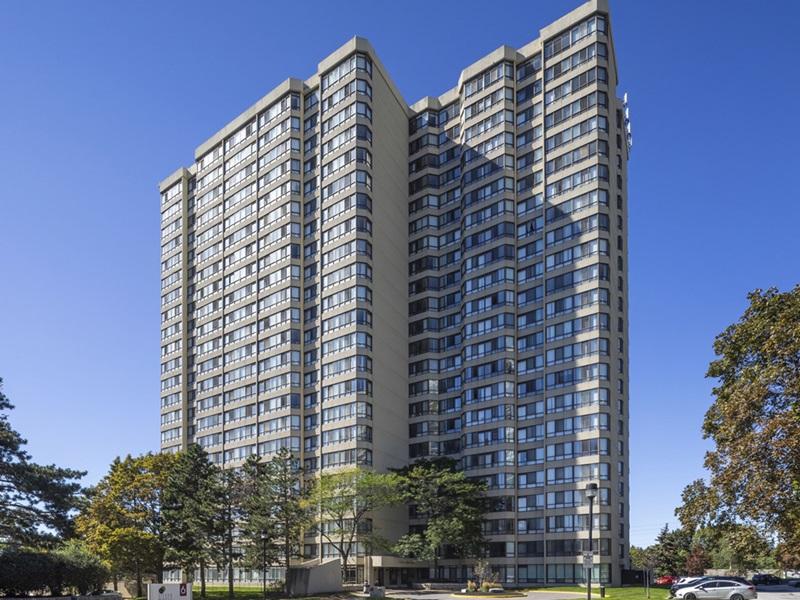 Only about half of the parking spaces at industrial properties around Metro Vancouver and the Fraser Valley are being used, according to a Vancouver-based study released this week.
Only about half of the parking spaces at industrial properties around Metro Vancouver and the Fraser Valley are being used, according to a Vancouver-based study released this week.
On Wednesday, the Vancouver chapter of NAIOP with Bunt & Associates Engineering released a report examining the impact of parking supply rates on industrial sites across the region. The report found a 50 per cent oversupply of parking at industrial locations after examining more than 60 sites.
The main takeaway is that developers are required to provide too much parking, said Carl Funk, director of industrial planning and development with Beedie, which supported the study by Bunt.
"There's an opportunity to reduce the required parking and potentially have more industrial buildings built on these sites — and that would potentially increase sites' efficiency by 10 to 15 per cent," he noted.
Funk said based on the findings industrial parking requirements should drop by about half. Even buildings which include office components should have reduced parking requirements given that actual usage of blended buildings also showed under-use.
"In Metro Vancouver we're looking at about four per cent of our land being industrial,” Funk said. “It's a limited amount compared to other cities like Calgary which has twice that, or L.A., which has significantly more."
Funk said the lack of overall industrial space prompted the organization to take a close look at parking, which it perceived as "low-hanging fruit" among various solutions to boost industrial space availability. The region currently has vacancy of below one per cent.
The 62 surveyed sites include a mix of strata and leased industrial properties of different sizes and formats in Vancouver, Surrey, Pitt Meadows, North Vancouver, New Westminster, Langley, Burnaby, Coquitlam, Langley Township, Richmond, Port Coquitlam, Abbotsford, Delta, Maple Ridge and Chilliwack.
Need to make better use of scarce industrial land
The findings should prompt a discussion among municipal governments, planners and developers around how to use industrial land more efficiently given that industrial properties accommodate essential job spaces, where things are built and materials are stored.
“We’ve got to make good use of it,” Funk said.
Most municipal parking bylaws guiding industrial parking have been around for a long time, Funk said. "We thought maybe it's time we just look at this and say . . . do these parking bylaw rates make sense?"
Generally speaking, cities in the region require about one stall per 1,000 square feet for industrial use, Funk said. Additional parking can be required if an industrial building has an office or retail component.
The report found cities closer to the urban core had higher parking use on average. The highest parking use was observed in Vancouver with an average utilization of 70 per cent. North Vancouver followed closely with a use rate of 63 per cent.
The lowest parking use was in Richmond at 32 per cent. Chilliwack parking use was measured at 34 per cent.
Researchers call for parking supply rate re-think
Based on the findings, Bunt recommended municipalities consider new parking supply rates for small, medium and large industrial sites based on building size and proximity to transit.
“This thoughtful approach will help mitigate limitations and foster economic growth in these regions,” the research team said in its release.
"Bunt understands the value of industrial land in Metro Vancouver and the need to strategically utilize it to support the growth of our local businesses,” Christephen Cheng, principal and senior transportation engineer at Bunt, said in the release.
“It is important to provide available locations for businesses to expand and meet their current needs to avoid seeing them consider alternative cities or even countries.”
Parking has been an overlooked aspect in the industrial market, Cheng said. “We aim to encourage positive change and ensure the ability for our industrial businesses to thrive and grow within our communities."
The parking study is a follow-up report to a study drafted by NAIOP and the Greater Vancouver Board of Trade on the Economic Impact Study of the Critical Shortage of Industrial Land in Metro Vancouver, as well as a presentation by NAIOP to Metro Vancouver on the Intensification of Industrial Lands in 2019.
These studies together emphasize the importance of industrial land in the region given its limited supply and the geographic constraints.
The four per cent of the Metro Vancouver and Fraser Valley land base dedicated to industrial land supports 27 per cent of the region's employment opportunities, the reports indicate.
Bunt collected the parking data in June 2022 by observing the number of used parking spots during peak weekday times across 62 industrial facilities. Surveyors held a re-count in October 2022, discovering a consistent oversupply of parking by 50 per cent.










